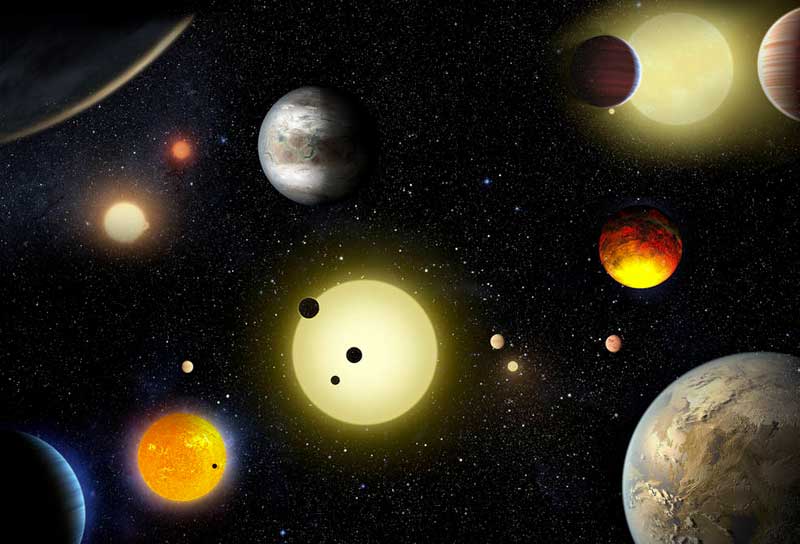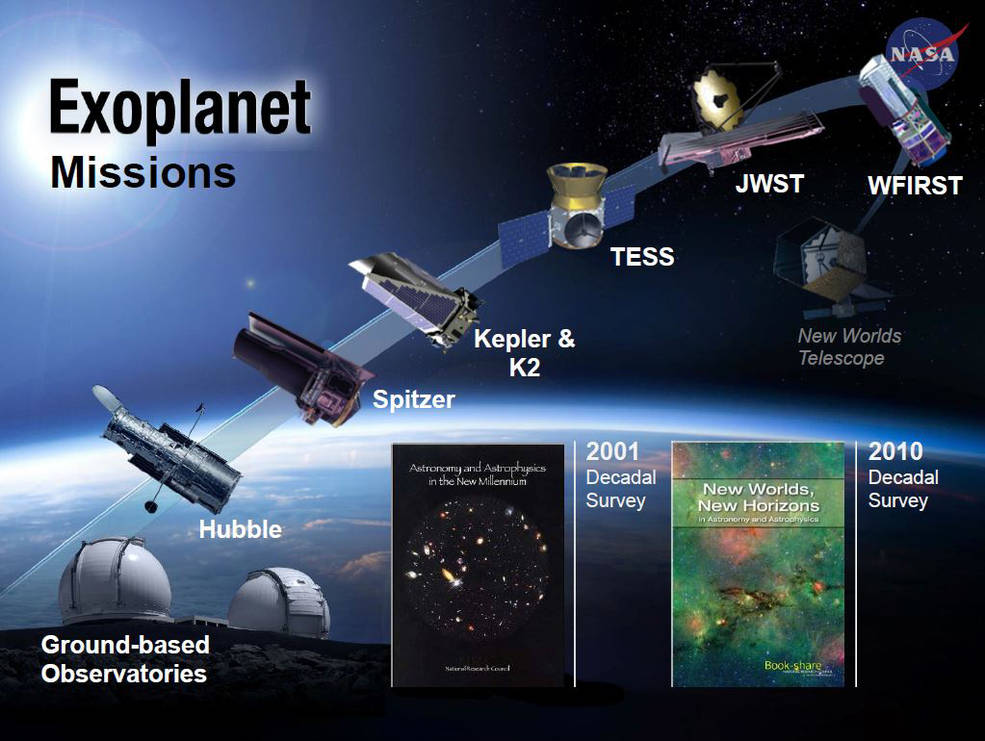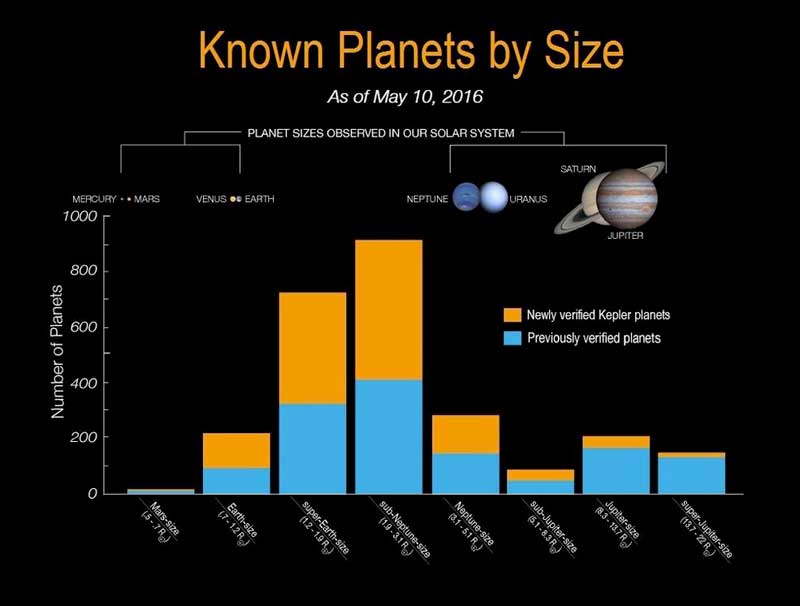Back
11 May 2016
To help in the hunt for exoplanets , ie those located outside of our solar system, we think Kepler, the NASA probe that, since 2009, continues to probe the space in search of a mate to our Earth.
the Kepler mission is a space mission, part of NASA’s Discovery program, whose purpose is research and confirmation of Earth-like planets orbiting stars other than the Sun, through the utlizzo the Kepler space telescope. The spacecraft, named after the German astronomer Johannes Kepler in the seventeenth century, was successfully launched March 7, 2009.
In yesterday we were all taken by the transit of Mercury across the Sun which has according to many, is the astronomical event of the year. In parallel, a tam-tam news, rumors and suppositions, caught hold of a sensational announcement of NASA through a press conference …

… Well! The announcement did occur, but not of those who make a stir. Of those who, over the years, have created expectations promptly rejected. The NASA has not discovered a Planet cufflink Earth. On the amount , however, this time they managed to impress. Armed with a dozen graphics one richer than the other, Timothy Morton, Princeton University and the other authors of one based study on four years of data Kepler and published on the Astrophysical Journal pitted figures from competing with Moore’s law . The number of confirmed exoplanets is more than doubled, reaching 3200. Customers who bought this share: The telescope NASA’s Kepler discovers 1,284 new exoplanets. Maybe 9 habitable
The Kepler space telescope NASA, which will remain operational at least until 2018 , has discovered more than 3,000 candidate planets here is the list CLICK hERE ‘
the magic words are always the same: water, atmospheric pressure, orbit, carbon dioxide and rotation. The fatal combination that makes life possible on a planet is one that scientists around the world seek to incessant manner. Observe, scrutinize, calculate, while millions of people, raising his eyes to heaven, are asking the same question: “Is there anyone else up there?”.

in late yesterday afternoon May 10, the NASA it has confirmed the existence of 1,284 planets outside the solar system, which are part of our Milky Way. 550 of these would be rock as the Earth and nine orbit the star in the “habitable” range with surface temperatures that would allow the presence of liquid water and life forms.
today’s announcement is the largest ever done on new planets.
the NASA researchers analyzed data from Kepler cataloged until July of 2015, in which were placed 4,302 potential planets: 1,284 of them the chance to actually be a planet exceeds the 99 percent, the minimum necessary to attribute to a celestial body not yet identified that state. For other 1,327 it is likely to be the planets, but there are not enough certainty, the remaining 707 are other celestial bodies type.
Timothy Morton , the Princeton University (new Jersey) and among those responsible for the new research whose results were published in the Astrophysical Journal, explained with an analogy effective the new method: “the likely new planets are like bread crumbs. If they do fall a bit ‘on the floor, you can pick them up one by one. But if they do drop a whole lot, you’ll need a broom. Statistical analysis is our broom. “
New exoplanets discovered since 1995. Credit: Ames / W NASA. Stenzel; Princeton University / T. Morton
This incredible amount of planets is not the result of new finding detected by Kepler, but a new technology that has allowed us to analyze existing data in more detail. This automated technique, the work of Princeton University, is implemented in a custom software package available to the public named Vespa . The s space telescope detects the extrasolar planets through the transit system (or occultation). Essentially, aims at a star and watch if there are variations in its brightness . Where the latter changes regularly, it is very likely that a large celestial body, such as a planet, may orbit the star itself.
the Kepler candidates require testing to determine if they real planets and not another object such as a small star
Credit: NASA Ames / W. Stenzel
“ This will gives hope that somewhere out there, around a star similar to our own, we will eventually find another Earth “, says Ellen Stofan , scientific manager of the Washington NASA offices .
” Before the Kepler space telescope was launched, we did not know if exoplanets in the galaxy were rare or common , “he says Paul Hertz , director of NASA’s astrophysics division. “ Thanks to Kepler and to the community of researchers now know that there may be more planets than stars. This awareness inspires future missions, necessary to bring us closer to find out if we are alone in the universe . “

Distribution of exoplanets by size. Credit: Ames / W NASA. Stenzel
The Universe life remains a mystery. But the simulations, discoveries, theories, leading to the Science one more step in the puzzle of which we too are part.
Kepler exoplanets
No comments:
Post a Comment